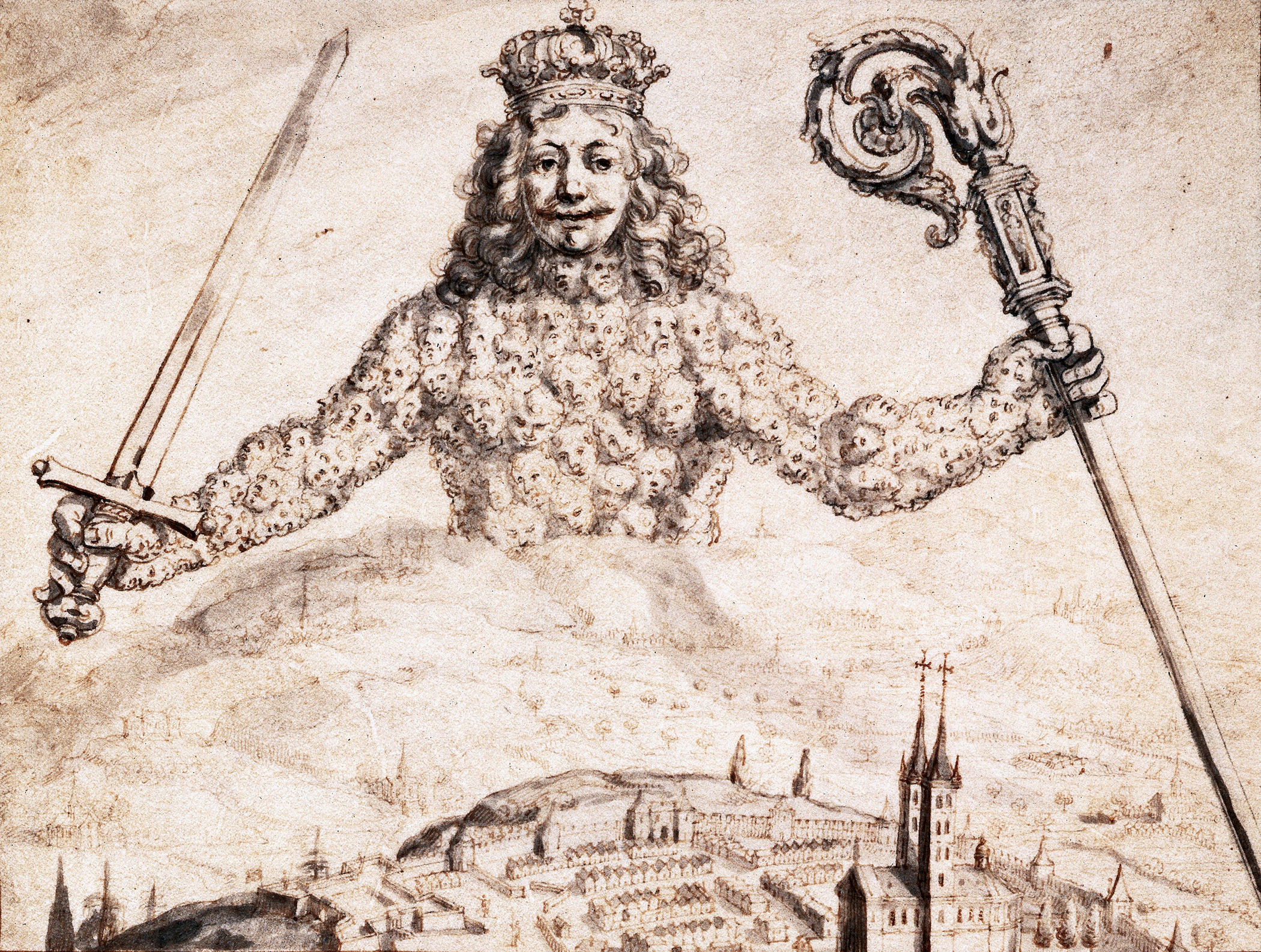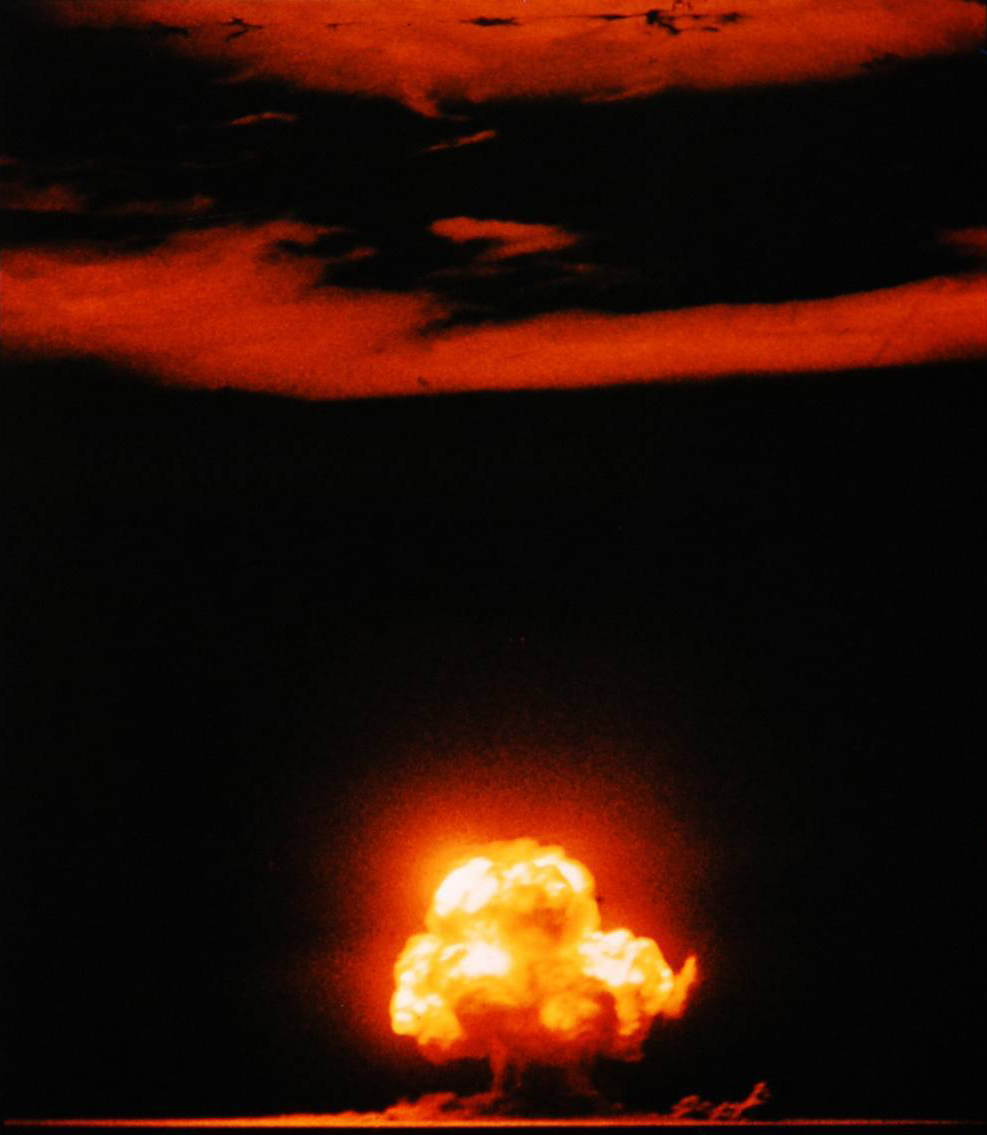A key figure here is the English 17th century philosopher Thomas Hobbes. He made a statement that remains very powerful to this day. Hobbes was writing in the middle of the 17th century in response to the English Civil War, and against this backdrop of revolution and war, he wrote his classic masterpiece Leviathan in order to show just how awful it was when you didn’t have the violent apparatus of the State to keep you safe. He thought that without the violent apparatus of the modern State, human beings would be in a condition of war. That’s his famous thought: the condition of nature is a condition of war.
How violence became quintessential to the idea of the Modern State
Senior Lecturer in the History of Ideas
- In the 17th century, Thomas Hobbes argued that the natural condition of people is war, which is why an all-powerful State with the threat of force was needed to maintain order.
- In the 20th century, Hannah Arendt argued that violence only leads to more violence and doesn’t allow for political dissent.
- Abolition theorists argue that the criminal justice system not only fails to keep us safe but also harms the citizens it should protect.
Using the threat of force to maintain order
A core idea in political philosophy since at least the 17th century, if not since antiquity, is that violence is quintessential to the definition of politics and to the State. The basic idea is that the State needs the threat of force in order to coerce people into maintaining order. People only behave well, the thought is, if they’re frightened of what will happen if they follow their impulses and, for example, murder someone they don’t like.

Pen drawing of the frontispiece of the Leviathan manuscript offered in 1651 by Hobbes to Charles II. Wikimedia Commons. Public Domain.
Hobbes on the human condition of war
Hobbes gave three reasons why human beings, left to their own devices without the coercive apparatus of the State, would be in a condition of war. The first was that human beings are naturally competitive. They want the same things, whether that’s land or a wife or an everyday object, and therefore they would start to fight over these things. He then said that this fundamental dynamic of competition causes people to mistrust each other, to be frightened of each other, and so to lash out in pre-emptive, mistrustful strikes against each other. Finally, he said that there was a particular kind of human being who positively enjoys dominating other people and therefore fuels the kind of war that he thought is endemic to human nature.
Arguing for a monster State
That is why Hobbes said you need to set up a State, the Leviathan, which will be of such unambiguous, enormous power and threat and force that no one will dare to disobey the law and take another person’s property or kill another person’s wife. The only way in which you can ensure peace – that people behave well and stay in their own jurisdiction and don’t take what’s not theirs – is if you erect a totally terrifying Leviathan, a monster of the State that will make sure that everyone behaves.
Hobbes chose the metaphor of Leviathan from the Old Testament. In the Book of Job, the Leviathan is described as this extraordinary sea monster. If you try to come at it with swords of iron, the beast just sloughs away the swords as if they were made of straw. If you shoot arrows at the beast, they become merely stubble in his beard. So there’s this idea that the State has to be the most terrifying thing in order to make sure that people behave.
Challenging the violent apparatus of the State
One philosopher in the 20th century who challenged this intimate definitional connection between violence and the State was German philosopher Hannah Arendt. She was a secular Jew who escaped the Gestapo, fled through Europe and found refuge in the United States. For her, politics was the opposite of violence. Violence wasn’t the securer or guarantor of politics; these two were opposing forces.
She’s writing under the threat of nuclear war and in the context of nuclear proliferation, in the heat of the Cold War. And she’s musing on this mad theory that mutually assured destruction will be the way in which we are assuredly going to remain safe and not destroy each other.

Famous color photograph of the "Trinity" shot, the first nuclear test explosion. 16 July 1945. Wikimedia Commons. Public Domain.
Arendt says that the idea that you use the threat of universal death in order to prevent universal death is the maddest thing she’s ever heard. Using violence as a deterrence against violence may be a nice theory, but if the 20th century has taught us anything, it’s that human beings will do the worst – they will murder each other in the millions. Therefore, the idea of using violence in order to prevent violence and preserve safety is mad.
Protecting freedom of dissent
In relation to this, Arendt asked us to think about the nature of the political. For her, the space of the political was a space where dissent was possible. The political was the space of consent and dissent. It was a space of freedom. It had to be a space of freedom; otherwise, it was a space of tyranny, which is not politics. And violence doesn’t allow for dissent.
Violence may get things done, but it snuffs out the thing that is quintessential to politics, which is the capacity for dissent, deliberation, debate and freedom. And that’s why Arendt was very worried about the student movements born in 1968 and continuing into the 1970s, although she understood that they came from the greatest and most just of intentions. She was worried because she did not think that violence would beget anything but more violence. Violence doesn’t beget politics, as far as Arendt was concerned.
How abolition theory challenges State violence
A further challenge to this idea that violence is essential to the definition and the working of the State comes from abolition theory, a theory developed by philosophers such as Angela Davis, Mariame Kaba and Ruth Wilson Gilmore. Their core thought is that you don’t solve the problem of violence with more violence.
There are various prongs to the theory. The first is that violence is not working; the criminal justice system is not keeping us safe. If you think about violence against women, it’s just not the case that women are kept safe by the criminal justice system, by prisons. The vast majority of rapes are not prosecuted. Indeed, the prosecutions for rape are falling in the UK. It’s the case that two women a week on average are murdered by their partner or their ex-partner in England. So, the first point is that it’s just not working. The State is not keeping you safe.
Proposing an alternative to violence
The second point is that not only does the State fail in its supposed salvific endeavour to keep you safe, but moreover it harms those people who are most in need of its protection, who are at the margins of power. If you look at who is incarcerated, it is disproportionately people of colour. It is people with mental illness. The majority of women in prison are themselves the victims of domestic violence. This is where the brutal irony of the violent politics of the State plays out.

Photo by somsak suwanput.
So the State perpetrates its own violence against the very people it ought to protect. Then, there’s the question of what to do next. Are you just going to defund the police? Are you just going to abolish prisons? The abolition theorists are absolutely passionate that this is not the entirety of their endeavour. It’s not just that you defund the police and abolish prisons, but that you fund society, you fund education, you fund health services, you fund the welfare State. That’s to say, you invest in supporting and caring for people in such a way that the terrible violence won’t occur.
Abolition theory has surged back into popular consciousness recently because of the clear demonstrations of the ways in which the police not only do not keep us safe but also harm their citizenry. In the US, police murdered George Floyd and Breonna Taylor. In England, Sarah Everard was allegedly killed by a police officer. Those are the facts. So that’s why it’s a very powerful theory right now. It feels like not only are our current solutions not working, but they’re positively harmful.
Discover more about
violence and the modern State
Dawson, H., & de Dijn, A. (Eds.) (Forthcoming). Rethinking Liberty Before Liberalism. Cambridge University Press.
Dawson, H. (2013). Life Lessons from Hobbes. Macmillan.
Dawson, H. (2009). Hobbes, Language and Philip Pettit. Hobbes Studies, 22(2), 219–230.